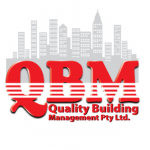It is vital to have a fire evacuation plan in the workplace that ensures all employees can get out of the building safely. Whether you are the employee or the employer, there are a number of things you need to make sure are known to be prepared for, and properly deal with a fire at work. There is no use with only having a ‘hazy idea’ of what evacuation procedures and fire fighting steps that should be taken.
Fire evacuation is the rapid removal of people in a safe and orderly manner from immediate or threatened danger in a workplace.
Procedures for Evacuation
Alert
Alert the Chief Warden and other staff. Ensure the emergency services have been notified (ring 000 and ask for Fire, Police or Ambulance)
Assembly
Tell staff which assembly area is to be used.
Evacuate
Evacuate staff and visitors in the following order:
- Out of immediate danger (e.g. out of room)
- Out of compartment (e.g. through the fire doors or smoke doors) or to a lower level of the building
- Total evacuation of the building.
Upon being told to evacuate, or hearing the fire alarm, follow these steps:
- Remain calm.
- Stop what you are doing. Leave the building immediately via the closest escape route. Never use the lift (elevator).
- Walk briskly, and never turn back.
- Never take anything with you.
- Always follow the Fire Warden’s instructions.
- Before opening any door feel the door and door handle. Never open a warm door as there could be a fire behind it.
- If the door is hot when you feel it then take another route. A window might be an option.
- If you encounter smoke during your evacuation, drop to the floor and crawl.
- Close all doors behind you and all windows along the way, as fresh air feeds fire.
- Assemble and remain at the evacuation assembly point. Do NOT return to the building until you are told by either the fire brigade or your immediate supervisor that it is safe.
- Notify someone of any injuries you have sustained, as soon as possible.
- Never cancel a fire alarm. Fire alarms should only be reset by those directed to do so.
Escape Routes
All employees should know their fire evacuation plan. There needs to be at least two ways to get out of a building, in case one of them has been blocked by fire. If you are the employer, make sure that all employees know what their escape options are.
There must ALWAYS be a clear fire evacuation path to each exit. Obstacles in the way can cause people to trip and fall, adding more possibility of injuries.
Make sure all escape routes are clearly marked so those who are trying to escape the building have no problem finding where they need to go during a stressful situation.
When it comes to those escape options, it is vital to make sure the doors are unlocked when there are employees or visitors in the building. You don’t want employees to go to what they think is a way to get out of a building safely and be stuck inside because the door has been chained or locked.
Never wedge fire doors open as they are designed to protect escape routes and prevent the spread of toxic smoke and fumes. And as fire needs oxygen to survive, a fresh feed of air through wedged open fire doors may only lead to building the fire hazard.
Check
Check all rooms, especially change rooms, toilets, behind doors, storage areas etc.
Records
Save as many records as possible if it is safe to do so.
Head count
Do a head count of all staff, contractors and visitors.
Report
Report to the Chief Warden and notify emergency services of any people unaccounted for.
Contact Quality Building Management today to organize your Fire Evacuation Planning.

